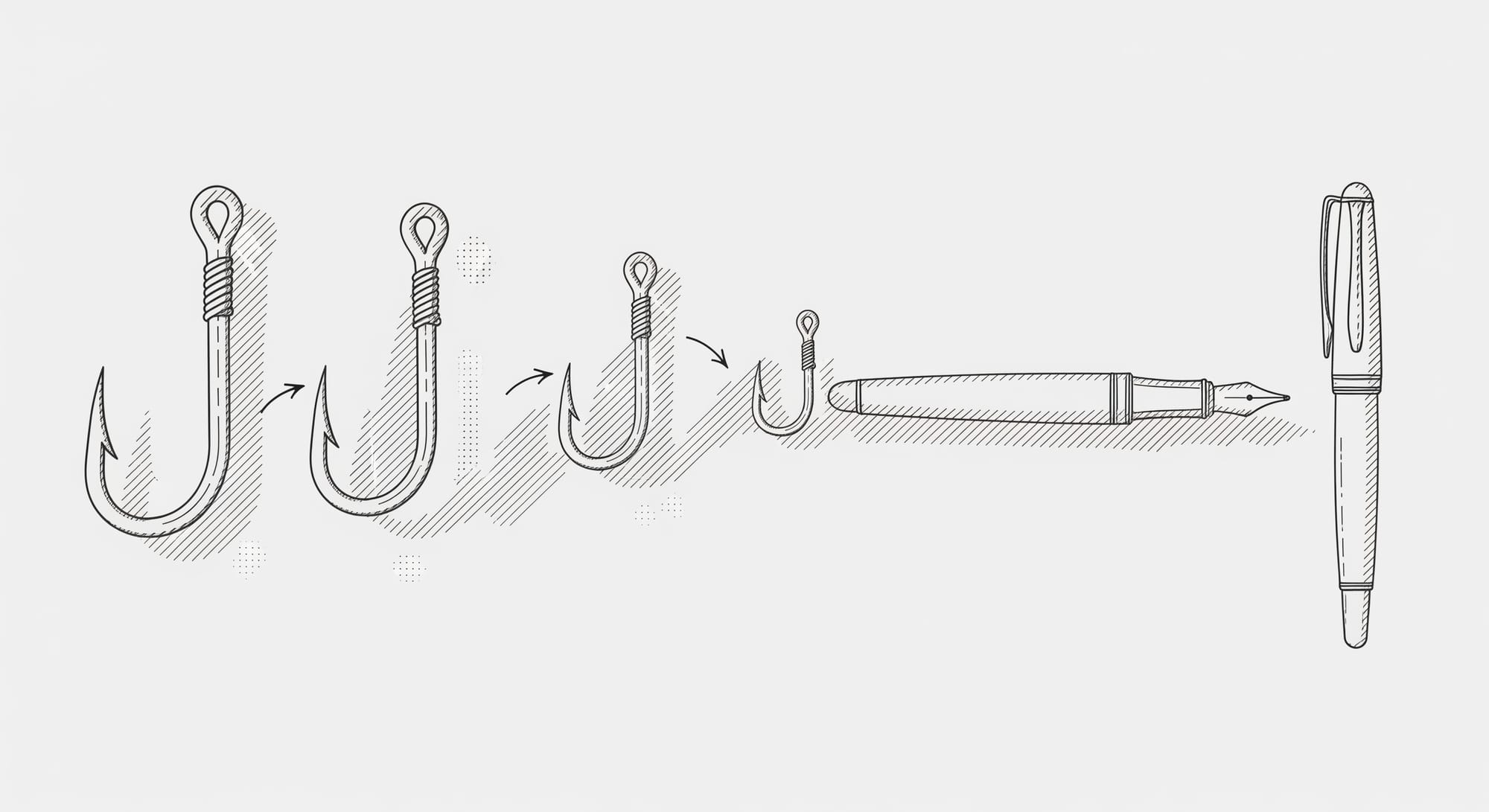How to Hook Readers When Everyone's Scrolling Fast

My grandmother was a notorious drunk and an avid fisherman.
One day, as she was soused in a John Boat on the Tennessee River, and I was sitting next to her, very bored, I said, "I can't catch any fish, Granny. How do you do it?"
She took a swig of her recycled milk jug full of moonshine and responded, "Well, Joe, you gotta hook 'em."
Turns out, she was talking about more than fish.
The Problem with Most Opening Lines
Most writers bury their hook under three paragraphs of throat-clearing. They warm up for 200 words before getting to anything interesting.
Your readers won't wait. They'll scroll past your intro, your explanation, and your careful setup. They're gone before you even cast your line.
You get one sentence to grab them. Maybe two if you're lucky.
The Hooks That Actually Work
I've written hundreds of articles. The ones that get read, shared, and remembered all start the same way. With a hook that stops the scroll.
Here are the ones I use:
Start in the Middle of the Story
Don't tell me you're going to tell me a story. Just start telling it.
Bad: "I want to share a story about something that happened to me last week."
Good: "I was standing in line at Starbucks when the guy in front of me started crying."
Jump straight into the action. Let the reader figure out where they are as they go.
Ask a Question That Hurts
Not "What do you think about productivity?" That's boring.
Try "What if everything you know about productivity is wrong?" That's better.
Or "How many hours did you waste yesterday?" That hits different.
The question should make them pause and think. If it doesn't sting a little, it's not working.
Drop a Number That Surprises
- "97% of people will quit reading this before they finish."
- "I made $50,000 last year selling something that took me two hours to create."
- "Most blog posts get fewer than 100 views."
Numbers cut through the noise. They feel concrete in a world of vague promises.
Make a Statement That Pisses People Off
- "College is a waste of money for most people."
- "Hustle culture is killing creativity."
- "Your morning routine doesn't matter."
Controversy gets attention. But make sure you can back it up with real experience, not just hot takes.
Start with a Specific Detail
Not "It was a beautiful day."
Try "The coffee shop smelled like burnt espresso and broken dreams."
Or "My bank account showed $47.82. Again."
Specific details create pictures. Pictures create emotions. Emotions create connections.
The Hook Test
Before you publish anything, read your first sentence out loud. Then ask:
- Would I keep reading if someone else wrote this?
- Does this make me want to know what happens next?
- Is this interesting enough to interrupt someone's scrolling?
If you answer no to any of these, rewrite it.
What Doesn't Work
- Definitions. "According to Webster's dictionary..."
- Statistics without context. "Studies show that..."
- Obvious statements. "Writing is important in today's world."
- Throat-clearing. "I've been thinking about this topic for a while..."
All of these make readers click away. Don't give them a reason to leave before you've given them a reason to stay.
Your Next Article
Take whatever you're working on right now. Delete the first paragraph. Start with the second one.
Still not hooky enough? Delete that one too.
Keep cutting until you find the sentence that makes someone lean forward instead of scrolling past.
That's your hook. That's where your article actually starts.
Everything else was just you warming up.
Thanks for reading!
Hi, I'm Joe. I help creators share their unique voices simply and effectively. Here's how I can help you:
- One email, Monday thru Friday
- Learn in less than a minute
- Simple. Repeatable. Human.
Minimal Inbox, Maximum Value. Niche of One.
Member discussion